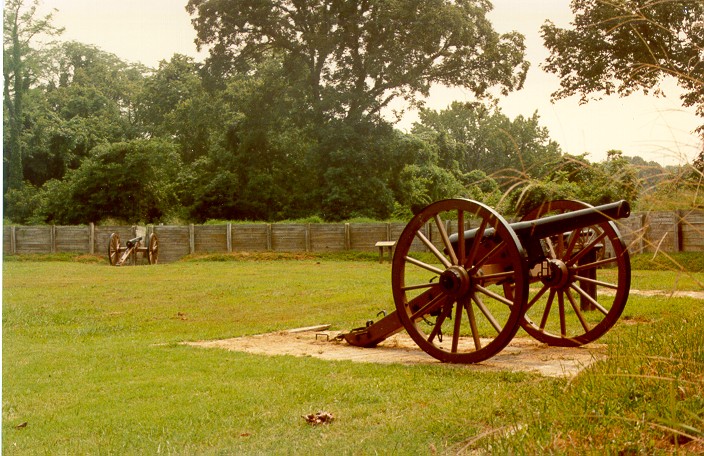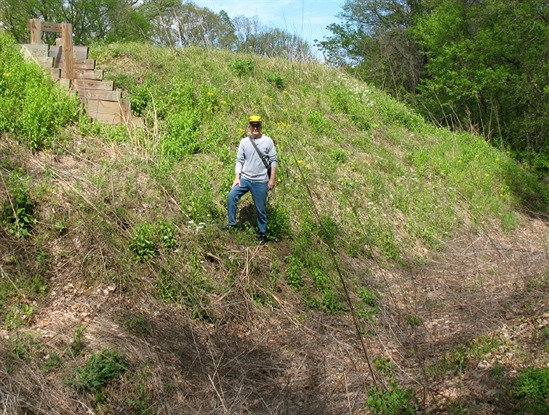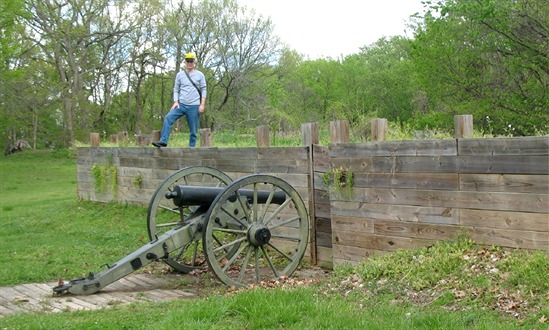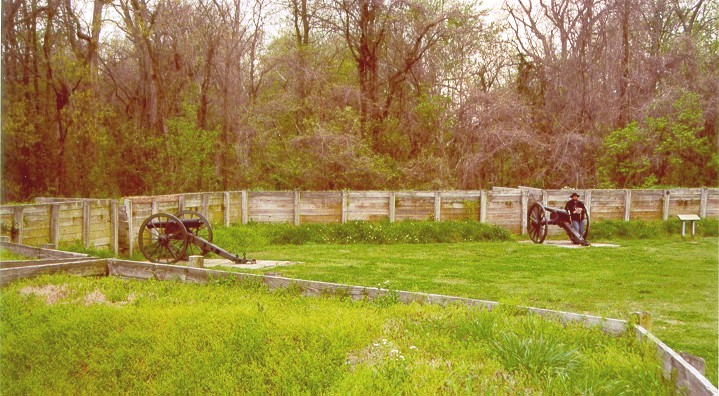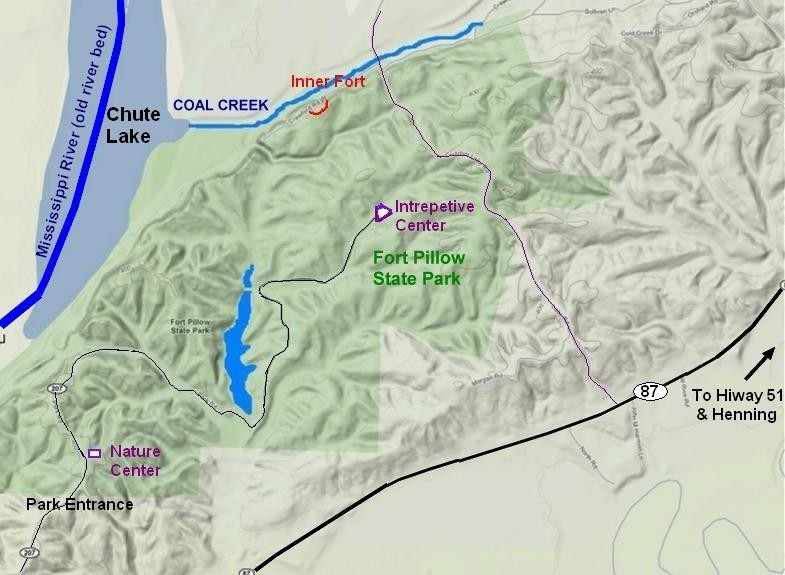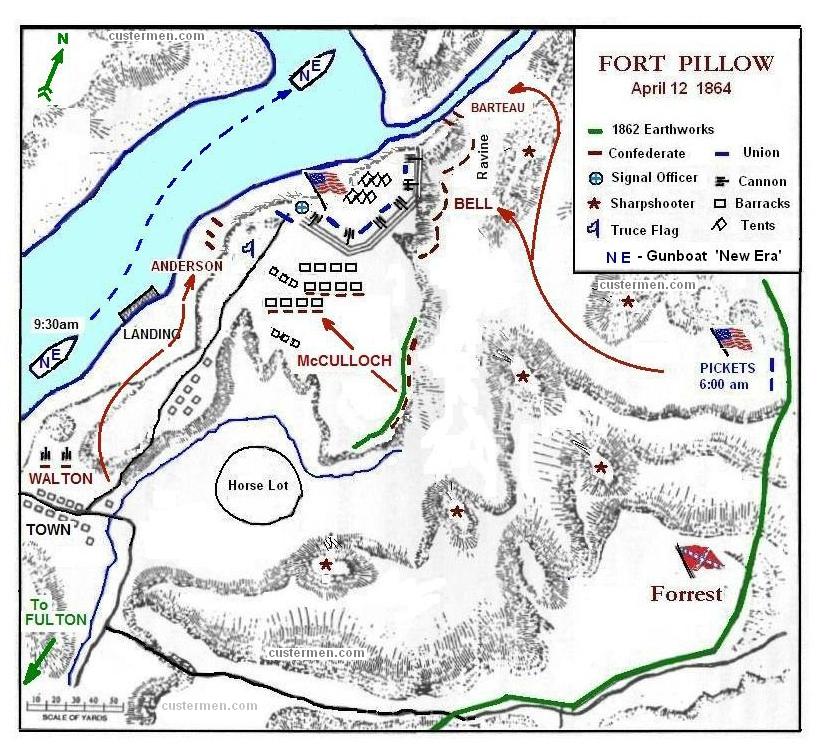|
Union Regiments
6th US Heavy
Colored
Artillery was refomred as the 11th US
Colored
Infantry Regiment.
March 11, 1864 - Formed. March 26, Companies
'A', 'B', 'C' & 'D' moved to Fort Pillow.
April 26, 1864 - Renamed 7th US Colored Heavy
Artillery.
Feb 7, 1865 - Survivors reformed as
11th US Colored Infantry Regiment.
Dec 11, 1865 - Mustered out of
service.
13th
Tennessee Cavalry (US) was officially known as the 14th Tennessee
Cavalry Regiment (US). The regiment began organizing at
Union City in October 1863. In January 1864 it was ordered to
Columbus, Kentucky and then to Paducah. On February 2, 1864, Major William F.
Bradford, was placed in command and ordered to occupy Fort
Pillow where he could continue to gather more recruits. Regiment
is not to be confused with the official 13th Tennessee Cavalry
Regiment(US), raised in East Tennessee and commanded by Colonel John
Miller.
2nd
US
Colored Light Artillery was formed as the 1st Tennessee Battery, (African Descent)
but was originally
known as the Memphis Light Battery. It was briefly attached to 1st Tennessee Heavy Artillery Regiment
(African Descent) as Co. "M". Then on March 11, 1864, it
was changed to Company "D" 2nd
U. S. Light Artillery Regiment (Colored). April 26, 1864 changed
to Company "F". A section of 40 men under the command of Lt. Alexander
Hunter were sent to Fort Pillow. The remaining section later took
part in the defeat at Brices' Crossroads on June 10, 1864.
The following regiments had a
few soldiers present at the Battle.
7th Tennessee
Cavalry (US) was originally formed as the 2nd West Tennessee Cavalry under the
command of Colonel Isaac R. Hawkins. A few soldiers from this
regiment were at the Battle of Fort Pillow.
6th Tennessee
Cavalry (US) was also known as the 1st West Tennessee Cavalry under the
command of Colonel Fielding Hurst. There was at least one
casualty from this regiment at the Battle of Fort Pillow. One of
the reasons for General Forrest's West Tennessee Raid in March-April
1864 was to try to hunt down Col. Fielding Hurst and his regiment, who
were harrassing the civilians and holding towns for ransom. The
6th Tennessee Cavarly narrowly escaped Forrest in a skirmish outside of
Memphis.
Stigalls Home Guard
was also reported to have some soldiers at Fort Pillow. The Home
Guard were local militia who were armed by the US Government but not
paid. They were used as scouts and anti-partisan patrols.
On occassion the home guard might participate in a battle. Six
soldiers from this unit were reported as prisoners.
The list of prisoners included one solider from the following
units. These soldiers could have stopped at the fort during a
transit down the river or were loaned to the fort to provide some
special service such as quartermasters.
7
Kansas Cavalry, 2
Illinois Cavalry, 2
Iowa Cavalry, 52
Indiana Infantry & Quartermaster Clerk
|
|
The 4 H’s
in
West Tennesse:
Hawkins, Hatch, Hurst,
Hurlbut
Hurlbut, Stephen
A., Major-General – Commander
XVI Army
Corps in West
Tennessee
General Hurlbut distinguished himself at the Battle of Shiloh.
Placed in command of area around Memphis. In January 1864, he was ordered to close down Fort Pillow when
Sherman began to move on Atlanta. He did
but then re-opened it again in February, supposedly to use as a port to
smuggle
cotton. Sherman had him relieved of
command and assigned a desk job; but he was never
court martialed.
Hawkins, Isaac R.,
Lt.-Colonel – Commander of 7th
Tennesse (US) Cavalry
Surrendered at Union City on March 24, 1864, when surrounded by Col.
Duckworth and 7th
Tennesse (CS) Cavalry. This battle was part of General Forrest's
West
Tennessee raid that culmunated in the Battle of Fort Pillow.
Lt.-Col. Hawkins had previously
surrendered to General Forrest in 1862. According to Regimental
Losses in the American Cicil War, the 7th Tennessee Cavalry was one of
four Union regiments with the largest number of prison deaths:
291 or 66%. In comparison, the 13th Tennessee Cavalry(US) that
surrendered at Fort Pillow lost 100+ deaths in prison. Colonel
Hawkins was exchanged.
Hatch, Edward,
Colonel - Commanded cavalry
brigade under General Hurlbut.
On 20 August,1863, Hatch commanded the 3rd Cavalry Brigade in
John K. Mizner's cavalry division. He brought
relief troops to the second Battle of Collierville on November 11,
1863. He was wounded
in the chest at Moscow,
Tenn on December 4,
1863, while fighting General Chalmers' division. Promoted
to Brig.-General on 27 April
1864. After the War he accepted command
of the all-Black 9th US Cavalry.
Hurst, Fielding, Colonel -
Commander of 6th Tennessee
(US) Cavalry
Col. Wiley Reed of 5th Mississippi Cavalry accused Hurst of extorting
the
citizens of Jackson, Tenn. and acts of murder. Forrest raid into West
Tennessee
was in retaliation to Hurst’s actions. On
March 29 near Bolivar, Neely’s Cavalry {13th Tenn or aka 14th}
attacked the 6th
Tennessee (US) Cavalry under Colonel Fielding Hurst and
captured
his entire wagon train, and routed and drove him back into
Memphis. Resigned
on 10 Dec., 1864.
|
